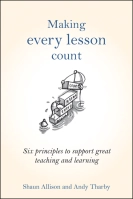The only way to know is to think
The foundation of our profession is rooted in encouraging children to pay attention to and think about the particular stimulus we want them to concentrate on. As Socrates once said, “The only way to know is to think.”. This highlights the importance of ensuring students are active, engaged learners—something that was central to Monday’s Tea and Teaching (T&T) session.
We began by reflecting on our teaching practices: identifying strengths, weaknesses, areas for growth, and the progress we’ve made. A key takeaway from these discussions was that success often stems from intentional, deliberate implementation. It’s not enough to identify strategies; we must commit to incorporating them consistently into our lessons.
All the methods for ensuring high think & participation ratio, as outlined in the Teaching: Principals in Practice, are best cultivated if we can deliberately and consistently implement them in our teaching and have the highest expectations of our students in their ability to reach them. It is easy to forget to add some think time to our questions, or forget to ask the question prior to naming the student. But small adjustments can have a big impact on our students’ engagement with the question. Even if they are not selected to answer it, they have nothing to lose by thinking about an answer even if they do not get to share it.
We discussed the paired talk a strategy that, while promising, still needs embedding into Durrington’s culture. James Crane mentioned how we must have a some “trust in the process” though there is the constant awareness that it could create idle chatter. Only by allowing the students to engage with the process will the reward outweigh the risk. As long as we provide them with clear guidance on how to do so (means of participation, brighten the lines, be seen looking) we can cultivate and model the expectations of how to successfully model the task.
Michael Kyle also mentioned how he does so with mini-whiteboards. He talked about how he was asking his class about a question on the relationship between variables shown on graphs, and he would draw the axes on his own board and told them to replicate, and the extra contribution that they needed to add to answer the question.
We finished off by talking about driving thought and how cognitive load theory has been a tad neglected in recent T&L discussions at Durrington. The conversation led to discussions about conscious management of cognitive load with regards to classroom displays and trying to manage the extraneous load of our classroom settings without compromising on making our classrooms a warm welcoming environment
Monday’s session was a reminder of the power of intentionality in teaching. By deliberately embedding these strategies and cultivating a culture of high expectations, we can empower our students to think critically and engage deeply with their learning. Not too bad for 15 minutes…
By Fahim Rahman

